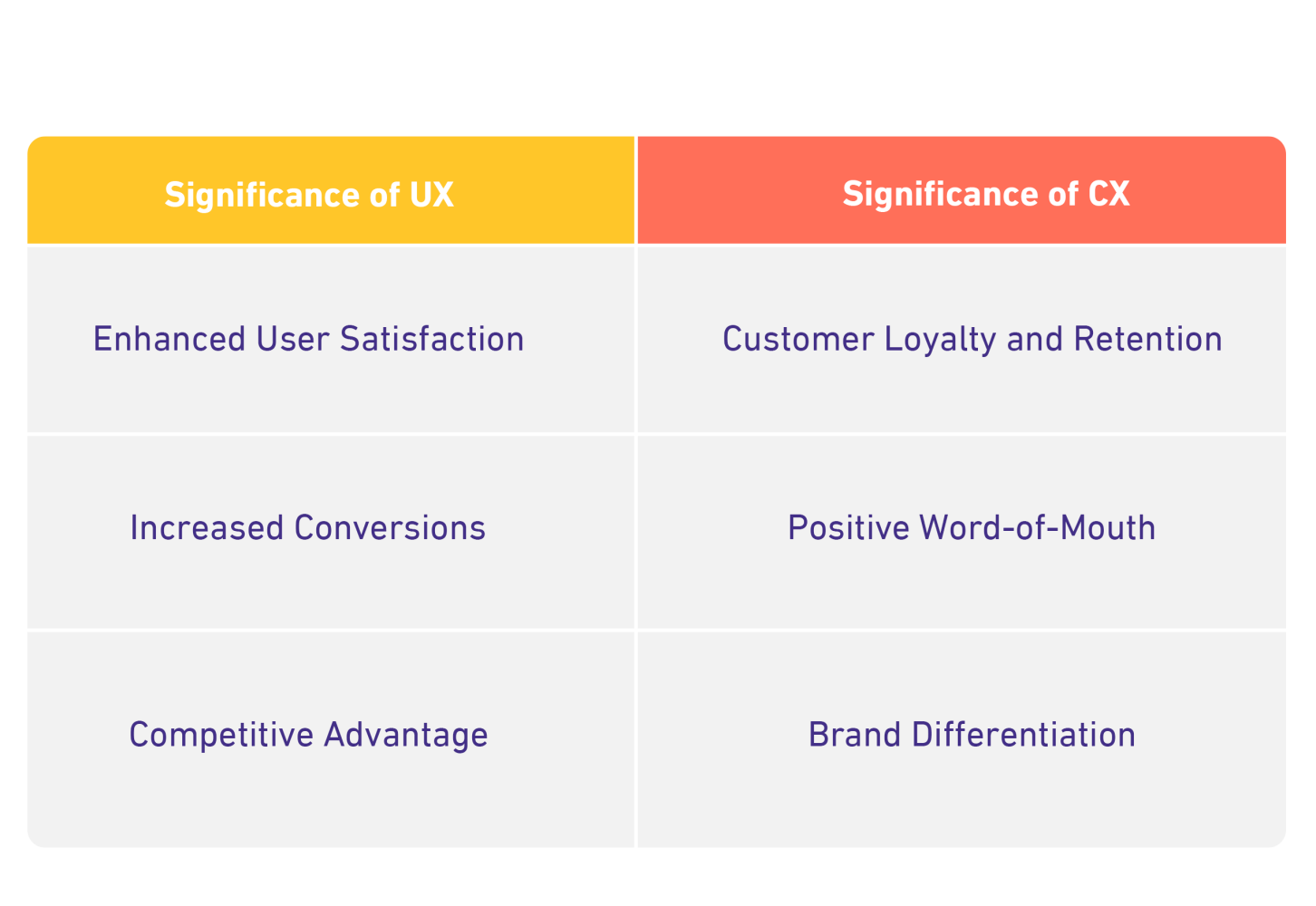In the dynamic digital landscape of 2025, delivering outstanding user experience (UX) and customer experience (CX) is no longer optional for businesses—it’s a necessity for survival and growth. For entrepreneurs in Saudi Arabia’s booming tech sector, where innovation is fueled by Vision 2030’s push for digital transformation, understanding the distinctions between UX and CX, and knowing how to prioritize them, is critical to building a customer-centric brand that thrives in a competitive market. This article dives deep into the differences between UX and CX, their unique roles in driving business success, actionable strategies for tech entrepreneurs to leverage both effectively, and real-world examples to inspire implementation. By optimizing UX and CX, businesses can enhance user satisfaction, foster loyalty, and secure a lasting competitive edge in a region poised for technological leadership.
What is User Experience (UX)?
User Experience (UX) refers to the holistic experience a user encounters when interacting with a digital product or service, such as a website, app, or software platform. UX encompasses elements like usability, accessibility, functionality, visual design, and even the emotional response elicited by the interaction. Effective UX design ensures that users can navigate seamlessly, complete their tasks effortlessly, and leave with a positive impression of the brand. This involves crafting interfaces that are intuitive, responsive, and tailored to the needs of the target audience.
For example, consider a Saudi-based e-commerce app designed for young professionals. A well-executed UX might include a clean layout with Arabic and English language options, fast load times, and a one-tap payment system integrated with local payment gateways like STC Pay or Mada. The ultimate aim of UX is to create products that are not only functional but also delightful to use, thereby boosting user satisfaction and engagement. In a tech-driven market, where first impressions are often digital, UX serves as the gateway to capturing and retaining users.
Why UX Matters for Entrepreneurs
For tech entrepreneurs in Saudi Arabia, prioritizing UX offers several tangible benefits that directly impact business outcomes:
- Boosted User Satisfaction: A product with excellent UX resonates with its target audience, leading to higher satisfaction rates. When users find a platform intuitive and easy to use, they’re more likely to engage frequently, recommend it to others, and return for future interactions. This organic advocacy can drive user acquisition and retention, especially in a socially connected market like Saudi Arabia.
- Higher Conversion Rates: A seamless UX can significantly increase conversions. For instance, an e-commerce platform with a streamlined checkout process, clear calls-to-action, and mobile optimization reduces friction, encouraging users to complete purchases. By simplifying the user journey, entrepreneurs can turn casual visitors into paying customers, directly boosting revenue and supporting scalability.
- Competitive Differentiation: In a crowded tech market, superior UX sets a brand apart. Consumers gravitate toward products that are visually appealing, responsive, and user-friendly. Entrepreneurs who invest in UX can create a memorable experience that distinguishes their brand from competitors, fostering loyalty and building a strong reputation. This is particularly crucial in Saudi Arabia, where local startups compete with global tech giants.
- Reduced Churn: Poor UX, such as confusing navigation, slow performance, or inaccessible features, can frustrate users and drive them to competitors. A polished UX minimizes these pain points, ensuring users remain engaged and loyal to the product. For subscription-based services, reducing churn is a key metric for long-term success.
- Alignment with Vision 2030: Saudi Arabia’s Vision 2030 emphasizes digital inclusion and innovation. A strong UX ensures that tech products are accessible to a diverse population, including those with varying levels of tech literacy, aligning with national goals and opening new market opportunities.
What is Customer Experience (CX)?
Customer Experience (CX) is the cumulative impact of every interaction a customer has with a brand across their entire journey—from initial awareness to post-purchase support and beyond. Unlike UX, which focuses on the product itself, CX spans all touchpoints, including marketing campaigns, customer service, billing processes, and even social media engagement. The goal of CX is to create meaningful, personalized experiences that exceed customer expectations, fostering loyalty and turning customers into brand advocates.
For instance, a customer’s CX with a Saudi-based fintech company might begin with a targeted social media ad, continue through a user-friendly mobile app (UX), and extend to prompt customer support via WhatsApp after a transaction. Each interaction shapes the customer’s perception of the brand and influences their likelihood to return or recommend it. In a market where trust and relationships are paramount, CX becomes a strategic differentiator.
Why CX is Critical for Entrepreneurs
CX is a powerful driver of long-term success for tech entrepreneurs, offering benefits that extend beyond the product itself:
- Enhanced Customer Loyalty: A positive CX builds emotional connections with customers, encouraging repeat purchases and long-term loyalty. For example, personalized follow-up emails or proactive customer support can make customers feel valued, increasing their likelihood of choosing the brand over competitors.
- Amplified Word-of-Mouth Marketing: Satisfied customers are natural brand advocates. In Saudi Arabia’s tight-knit communities, positive word-of-mouth can significantly influence purchasing decisions. By delivering exceptional CX, entrepreneurs can generate organic buzz, attracting new customers without heavy marketing spend.
- Brand Differentiation: In a market where products and services are increasingly similar, CX becomes a key differentiator. A brand that consistently delivers delightful experiences, such as fast response times or tailored recommendations, stands out and creates a lasting impression.
- Increased Customer Lifetime Value (CLV): Loyal customers who enjoy a stellar CX are more likely to make repeat purchases, engage with additional services, and provide valuable feedback. This sustained revenue stream is vital for scaling a tech startup and achieving profitability.
- Support for Local Market Dynamics: Saudi consumers value personalized and culturally relevant experiences. A CX strategy that incorporates local holidays (e.g., Eid) or regional preferences can deepen customer trust and engagement.
Case Study: Successful UX and CX in Saudi Tech
A notable example is Jahez, a Saudi food delivery platform. Jahez invested heavily in UX by designing an app with a simple interface, real-time order tracking, and Arabic language support, which improved user satisfaction and conversion rates. Simultaneously, their CX strategy included 24/7 customer support, loyalty programs, and Ramadan-specific promotions, fostering customer loyalty and word-of-mouth growth. This dual focus has helped Jahez compete with global players like Uber Eats, showcasing the power of balancing UX and CX.

UX vs. CX: Which Should Entrepreneurs Prioritize?
While UX and CX are interconnected, they serve distinct purposes. UX focuses on the usability and design of a specific product, ensuring individual users have a seamless and enjoyable experience. CX, on the other hand, takes a broader view, encompassing every interaction a customer has with the brand, from pre-purchase research to post-purchase support.
For tech entrepreneurs in Saudi Arabia, the decision to prioritize UX or CX depends on their business stage and goals:
- Early-Stage Startups: For new ventures, UX is often the starting point. A product with poor usability or design will struggle to attract users, regardless of the broader customer experience. By investing in UX, entrepreneurs can create a compelling product that draws users in and converts them into customers. For instance, a Riyadh-based startup launching a health app must ensure its interface is intuitive for elderly users to gain initial traction.
- Scaling Businesses: As a company grows, CX becomes equally important. Once users become customers, delivering consistent, personalized experiences across all touchpoints is crucial for retention and advocacy. For example, a fintech app with great UX might lose customers if its support team is unresponsive or its billing process is confusing. Scaling requires a holistic approach to maintain customer trust.
In practice, UX and CX are not mutually exclusive. A strong UX lays the foundation for a positive CX, while a robust CX strategy amplifies the impact of a well-designed product. Entrepreneurs must strike a balance, ensuring their product is user-friendly while also nurturing customer relationships throughout the journey.
Strategies for Optimizing UX and CX
To thrive in Saudi Arabia’s competitive tech landscape, entrepreneurs can adopt the following strategies to enhance both UX and CX:
- Conduct User Research: Understand your target audience’s needs, preferences, and pain points through surveys, interviews, and usability testing. Use tools like Hotjar or UserTesting to gather insights. For example, testing with Saudi youth might reveal a preference for voice commands in apps.
- Leverage Data Analytics: Track user behavior and customer feedback to identify areas for improvement. Use tools like Google Analytics, Mixpanel, or Tableau to analyze heatmaps, session recordings, and customer satisfaction scores (e.g., Net Promoter Score). This enables data-driven optimizations.
- Personalize Experiences: Use AI and machine learning to deliver personalized recommendations and communications. For example, a Saudi e-commerce platform could suggest products based on a user’s browsing history or location, enhancing both UX and CX. Tools like Optimizely or Dynamic Yield can automate this process.
- Invest in Customer Support: Prompt, empathetic support is a cornerstone of CX. Offer multiple channels—like live chat, email, phone, and WhatsApp—and ensure quick resolution of issues. Training support teams in cultural nuances (e.g., respect for privacy) can further enhance CX. Consider integrating tools like Zendesk or Freshdesk.
- Test and Iterate: Continuously test your product’s usability and gather customer feedback to refine both UX and CX. A/B testing different designs or support approaches can help identify what resonates most with your audience. Use platforms like Optimizely or VWO for testing.
- Incorporate Local Culture: Integrate Saudi cultural elements, such as Arabic calligraphy in design, festive campaigns during Ramadan, or support for dialects like Hijazi Arabic, to create a relatable UX and CX that resonates with local consumers.
- Adopt Emerging Technologies: Explore AI chatbots, augmented reality (AR) for product previews, or voice interfaces to enhance both UX and CX. These technologies can provide innovative touchpoints that align with Saudi Arabia’s tech-forward vision.
Emerging Trends in UX and CX
- AI and Automation: AI-driven personalization and chatbots are transforming UX by offering real-time assistance and CX by providing 24/7 support.
- Voice Interfaces: With the rise of Arabic voice tech, integrating voice commands can enhance UX for hands-free use and CX through voice-based customer service.
- Sustainability: Consumers are increasingly valuing eco-friendly practices, which can be reflected in UX (e.g., energy-efficient apps) and CX (e.g., green initiatives).
- Omnichannel Integration: Seamless transitions between web, app, and physical touchpoints are becoming essential for a cohesive CX.
Challenges and Solutions
Entrepreneurs may face challenges such as limited budgets, lack of expertise, or cultural misalignment. Partnering with local design agencies or leveraging free UX tools (e.g., Figma, Adobe XD) can address resource constraints. Additionally, staying updated with global UX/CX trends while adapting them to Saudi preferences requires ongoing learning, which can be supported through workshops, online courses (e.g., Coursera), or collaboration with universities like King Saud University.
Conclusion
In Saudi Arabia’s fast-evolving tech ecosystem, mastering UX and CX is essential for entrepreneurial success. A stellar UX ensures that products are intuitive, engaging, and conversion-friendly, laying the groundwork for customer acquisition. Meanwhile, a robust CX fosters loyalty, advocacy, and differentiation, driving long-term growth. The success of companies like Jahez and Tameeni demonstrates the power of this dual approach.
To stay ahead, entrepreneurs should invest in user research, leverage data-driven insights, adopt emerging technologies, and continuously refine their approach to UX and CX. By doing so, they can build sustainable brands that resonate with Saudi Arabia’s tech-savvy consumers and contribute to the nation’s digital ambitions under Vision 2030. As of 03:00 PM EEST on Wednesday, May 14, 2025, the time is ripe for Saudi tech entrepreneurs to harness these principles and lead the region into a new era of innovation.




0 Comments